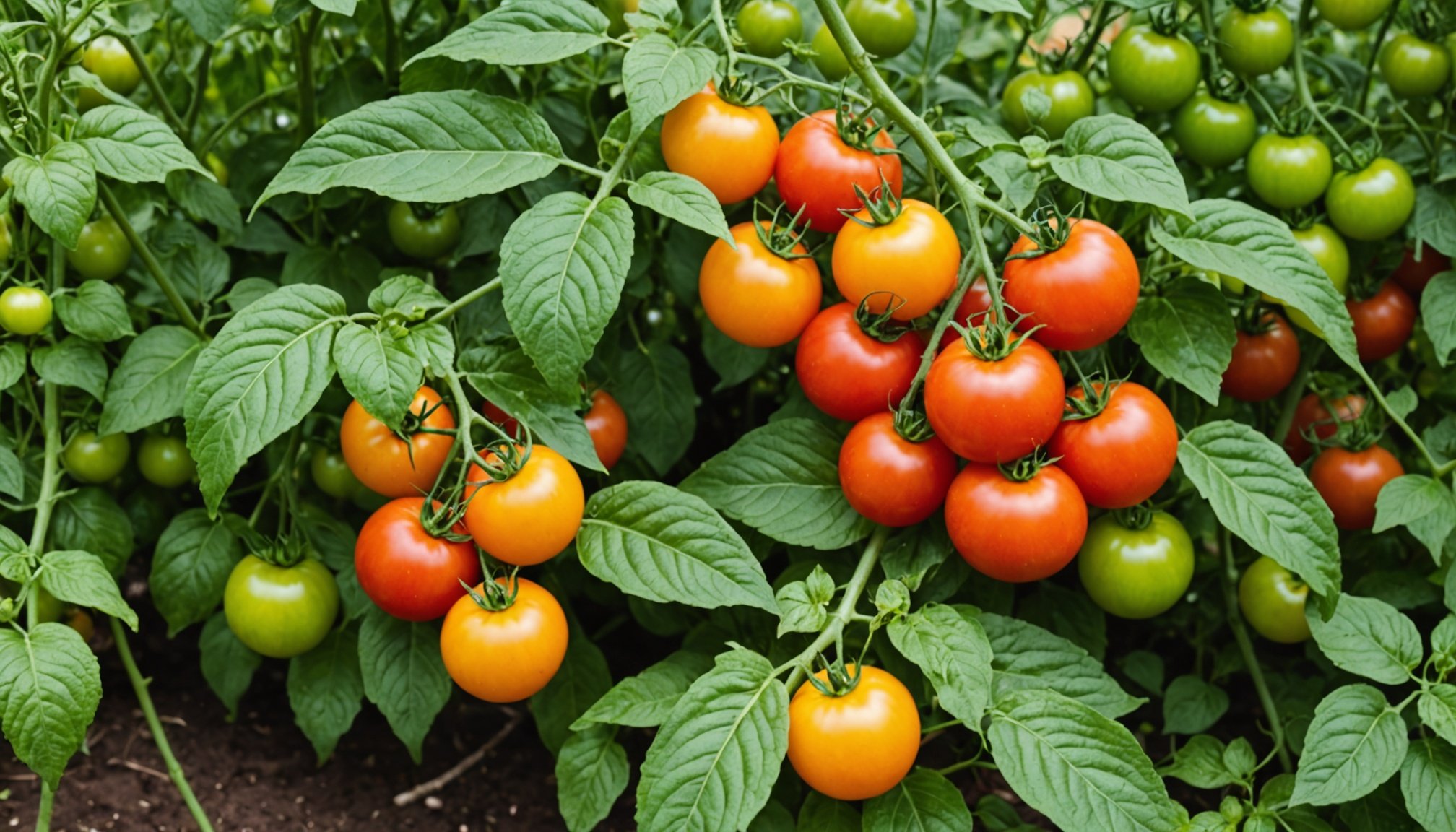Companion planting is a practice that has been used for centuries in gardening to enhance growth, deter pests, and improve the overall health of plants. For those of you who cultivate tomatoes, understanding which plants can thrive alongside them is crucial. Not only can the right companions boost your tomato plants’ growth and flavor, but they can also create a more harmonious garden environment. In this article, we will explore the best companion plants for tomatoes, the role of pests and beneficial insects, and strategies for optimizing your soil to support healthy growth.
Understanding the Importance of Companion Planting
Companion planting involves pairing certain plants together to benefit each other. When it comes to tomatoes, this practice is particularly beneficial. The plants you choose to grow alongside your tomatoes can greatly influence their health, yield, and taste. By establishing a diverse garden ecosystem, you can improve resistance to pests and diseases, enhance nutrient uptake, and even boost the flavor of your tomatoes.
Also to discover : How do I create a vertical garden in a small outdoor area?
To start, consider how different plants interact with each other. Some may release chemicals that deter pests, while others might attract beneficial insects that prey on harmful ones. For example, planting basil near your tomato plants not only improves their flavor but also repels aphids, spider mites, and hornworms. This synergy can lead to healthier plants and a more sustainable gardening practice.
Moreover, certain companion plants can enhance soil health. Deep-rooted plants, like garlic, can help aerate the soil, allowing tomatoes to access nutrients more effectively. Additionally, plants that fix nitrogen in the soil can provide essential nutrients that promote growth. Understanding these dynamics enables you to create a thriving garden environment where your tomatoes can flourish.
Also to discover : Essential camo netting: perfect choices for every need
Best Companion Plants for Tomatoes
Identifying the best companion plants for your tomatoes can significantly impact their growth and productivity. Here are some top choices:
Basil is often hailed as one of the best companions for tomatoes. Not only does it deter pests, but it also enhances the flavor of the fruit. The aromatic compounds in basil can repel harmful insects, making it a perfect addition to your tomato garden.
Garlic is another excellent option. This robust plant helps repel aphids and other insects that can harm your tomatoes. Additionally, garlic has antifungal properties that can protect your plants from diseases such as blight.
Marigolds are colorful flowers that serve a dual purpose in the garden. Not only do they add visual appeal, but they also produce a scent that repels nematodes and other pests. Their presence can promote a healthier environment for your tomatoes.
Nasturtiums are not only edible but also attract aphids away from your tomatoes. By planting these vibrant flowers nearby, you can keep harmful insects occupied while protecting your valuable crops.
Finally, consider planting carrots. These root vegetables can coexist harmoniously with tomatoes, as they do not compete for nutrients above ground. Moreover, their foliage can provide shade for young tomato plants, helping to retain moisture in the soil.
By incorporating these companion plants into your garden, you can create a more productive and resilient environment for your tomatoes.
Soil Health and Tomato Growth
The foundation of successful tomato growth lies in the soil. Healthy soil is rich in nutrients and has good drainage capabilities, which are vital for strong plant development. To achieve optimal soil health, consider the following factors:
First, test your soil to determine its pH and nutrient levels. Tomatoes thrive in slightly acidic conditions with a pH between 6.0 and 6.8. You may need to amend your soil with organic matter such as compost to achieve this balance.
Next, ensure that your soil is well-draining. Tomatoes are prone to root rot if waterlogged. You can improve drainage by incorporating sand or perlite into heavy soils. Raised beds are another effective way to promote drainage and allow for better air circulation around the roots.
Adding organic fertilizers can also enhance soil fertility. Look for products that are high in potassium, as this nutrient is essential for fruit development. Regularly incorporating compost into your garden will provide a steady supply of nutrients and improve soil structure over time.
Furthermore, practicing crop rotation each season can help prevent soil-borne diseases that affect tomatoes. By alternating the location of your tomato plants, you can disrupt the lifecycle of pests and pathogens that may linger in the soil.
Finally, mulching around your tomato plants can help retain soil moisture and suppress weed growth. Organic mulches such as shredded leaves or straw will also decompose over time, enriching the soil and fostering a healthier gardening ecosystem.
Managing Pests and Beneficial Insects
Pest management is a crucial aspect of growing tomatoes successfully. Many common pests can threaten the health of your plants, but companion plants can play a significant role in controlling these nuisances. Here’s how to manage pests effectively:
Start by identifying the insects that commonly affect tomatoes. Aphids, spider mites, and whiteflies are among the most prevalent. By planting companion plants such as basil and marigolds, you can deter these harmful insects from your tomato plants.
Encouraging beneficial insects is another effective strategy. Ladybugs, lacewings, and predatory wasps can help keep pest populations in check. To attract these helpful insects, plant flowers like dill, cilantro, and yarrow nearby. These plants provide pollen and nectar, which attract beneficial insects to your garden.
In addition to companion planting, regular monitoring of your tomato plants is essential. Look for signs of pest activity and take action quickly. Handpicking larger pests and using insecticidal soap for smaller infestations can be effective methods of control.
Moreover, practicing good garden hygiene can help minimize pest issues. Clear away debris from your garden, as it can harbor pests and diseases. Rotate your crops annually to prevent the buildup of pests in the soil.
Finally, consider introducing natural predators into your garden. For instance, nematodes can target specific pests in the soil, while certain bird species will eat insects directly from your plants. By fostering a healthy ecosystem, you can manage pests without relying solely on chemical pesticides.
Incorporating companion plants into your tomato garden can lead to impressive results in both plant health and flavor. By choosing the right companions, enhancing soil quality, and effectively managing pests, you’ll create an environment that supports vibrant tomato growth. Whether you’re an experienced gardener or just starting, using these strategies will aid you in cultivating a flourishing garden.
Remember, gardening is not just about growing plants; it’s about creating a balanced ecosystem that benefits all species involved. By understanding the relationships between tomatoes and their companion plants, you enhance not only your crop yield but also the overall health of your garden. Embrace the art of companion planting and watch your tomato plants thrive.











